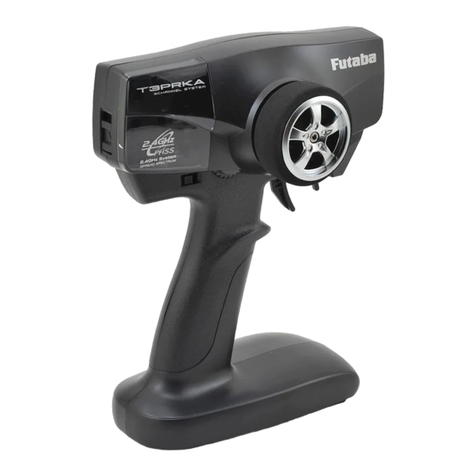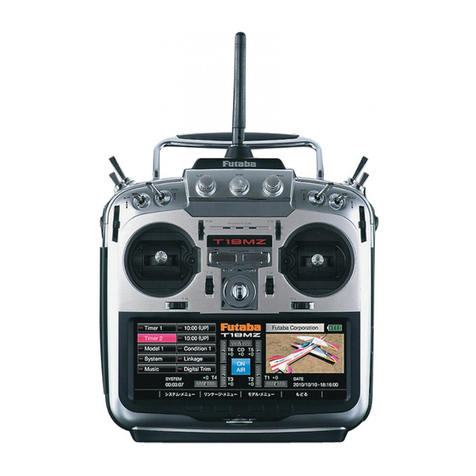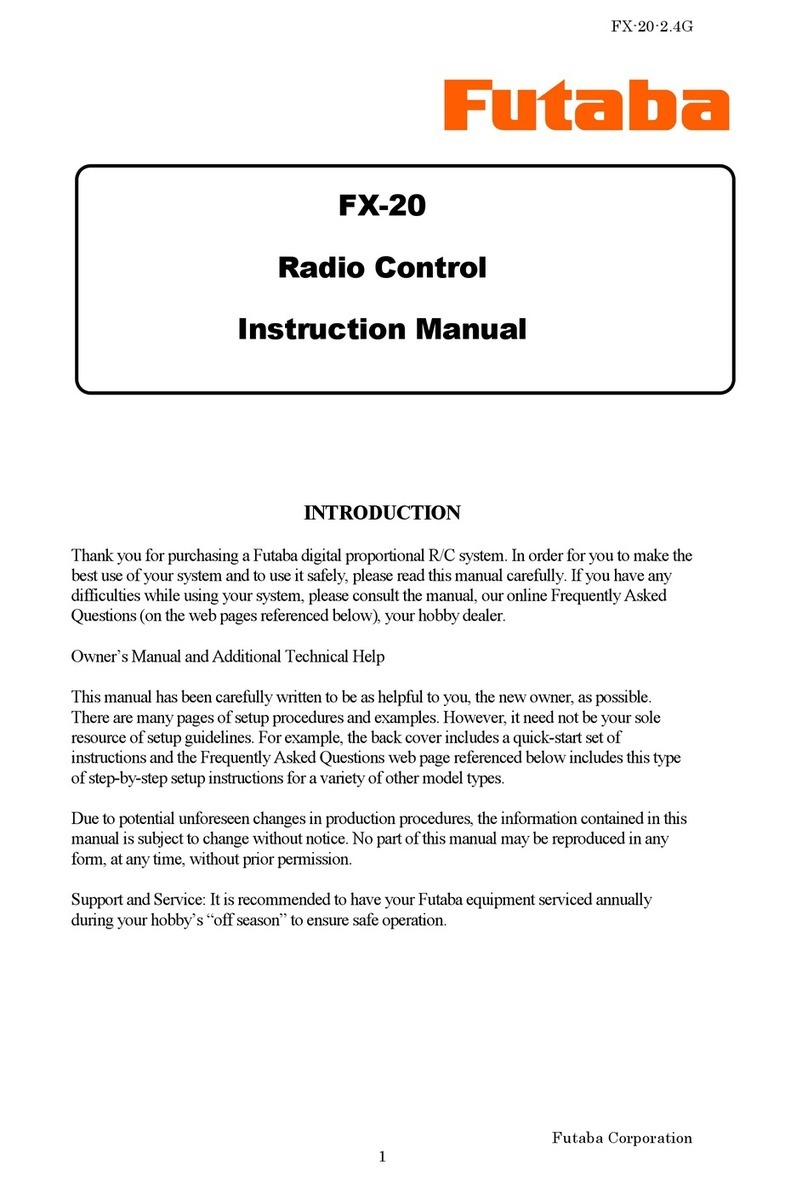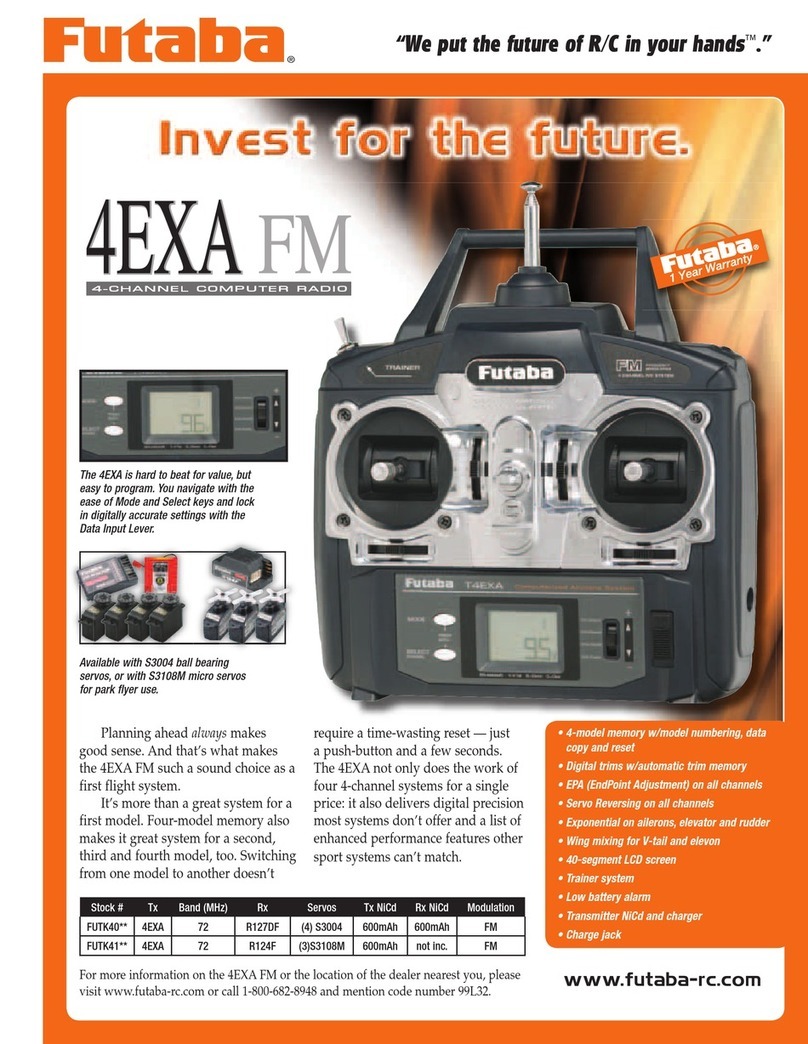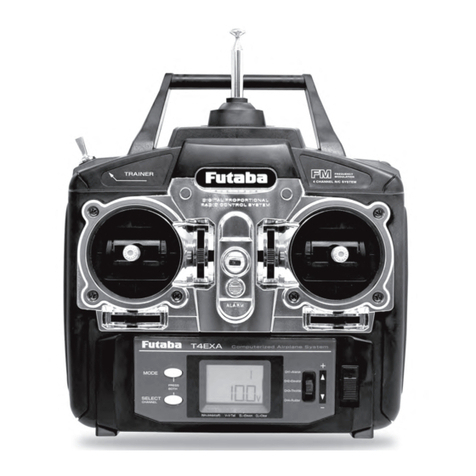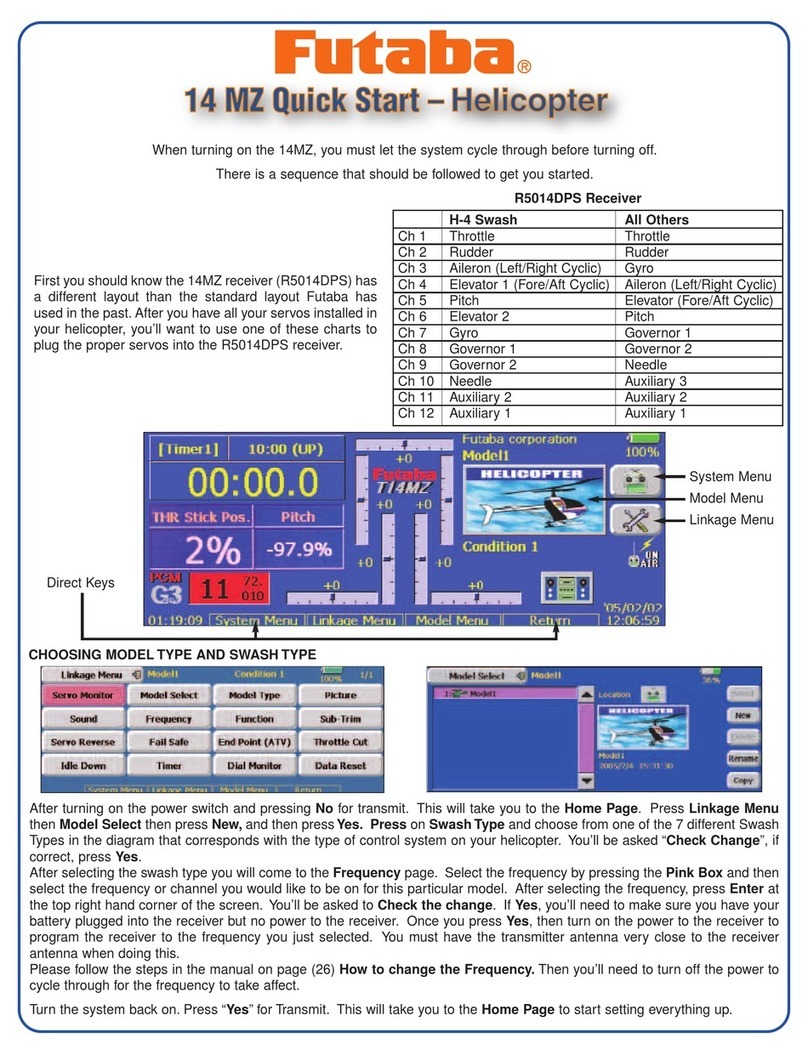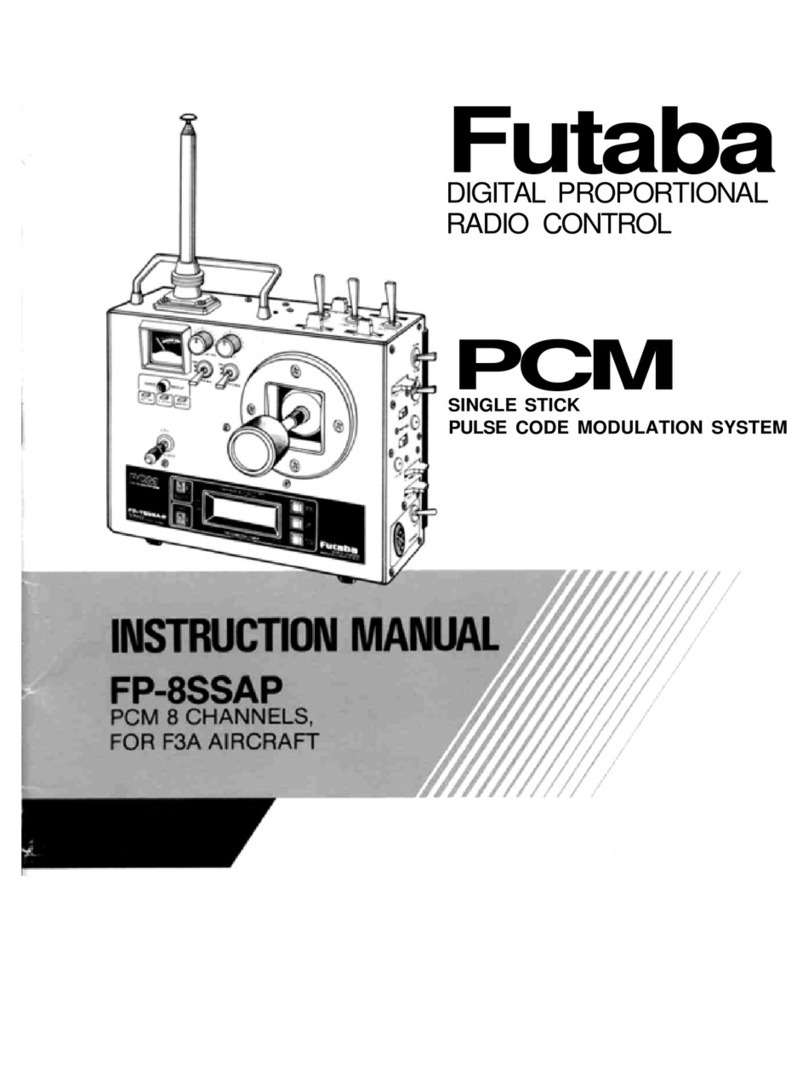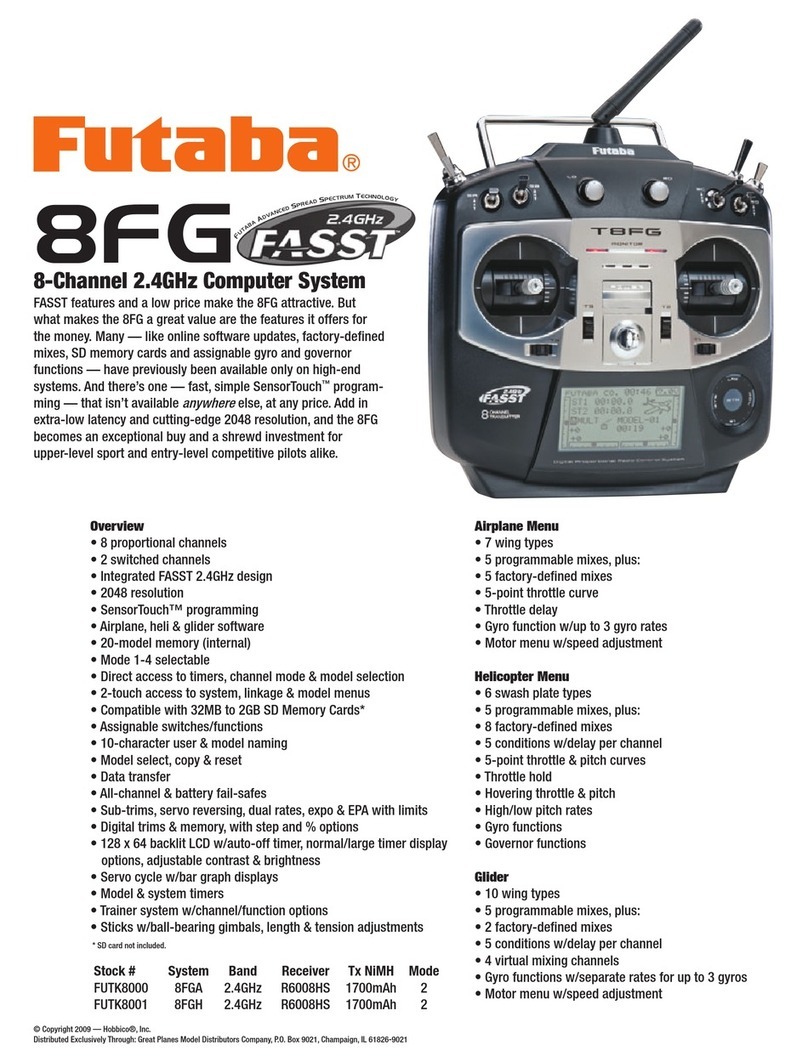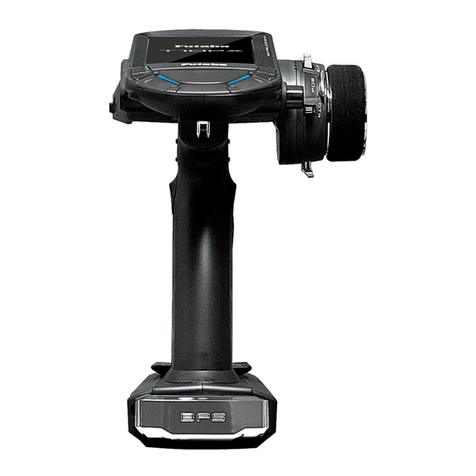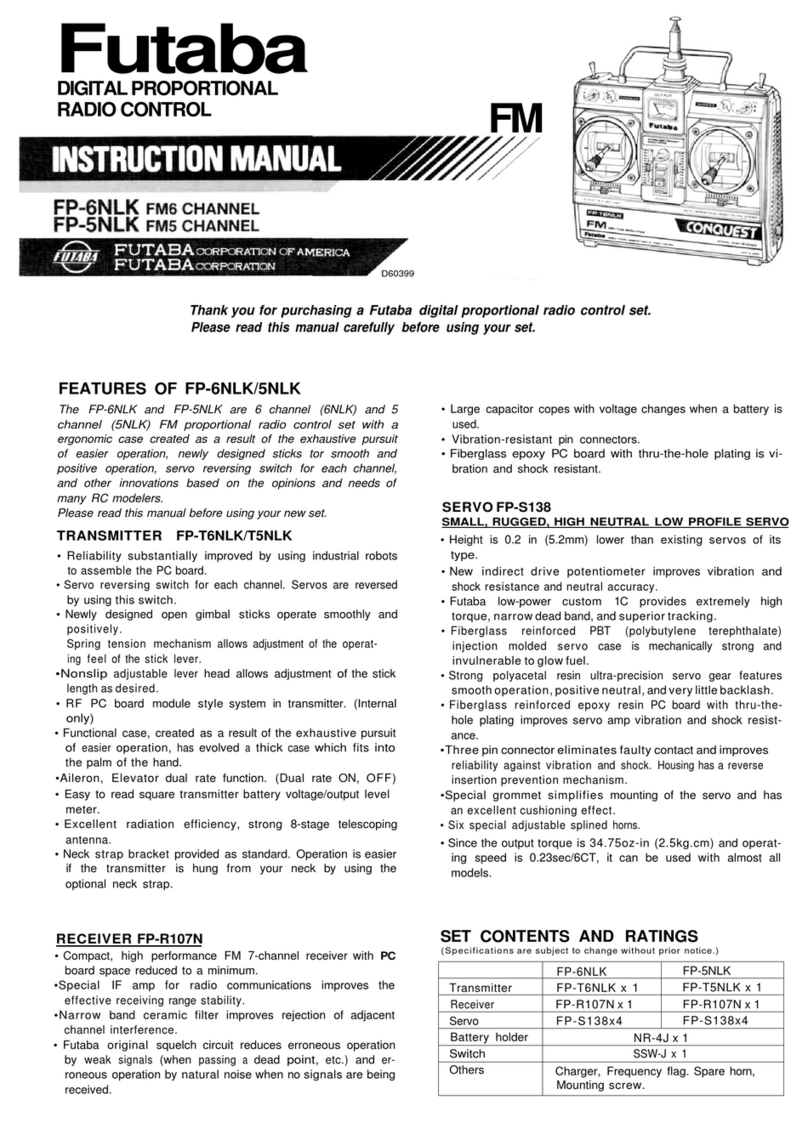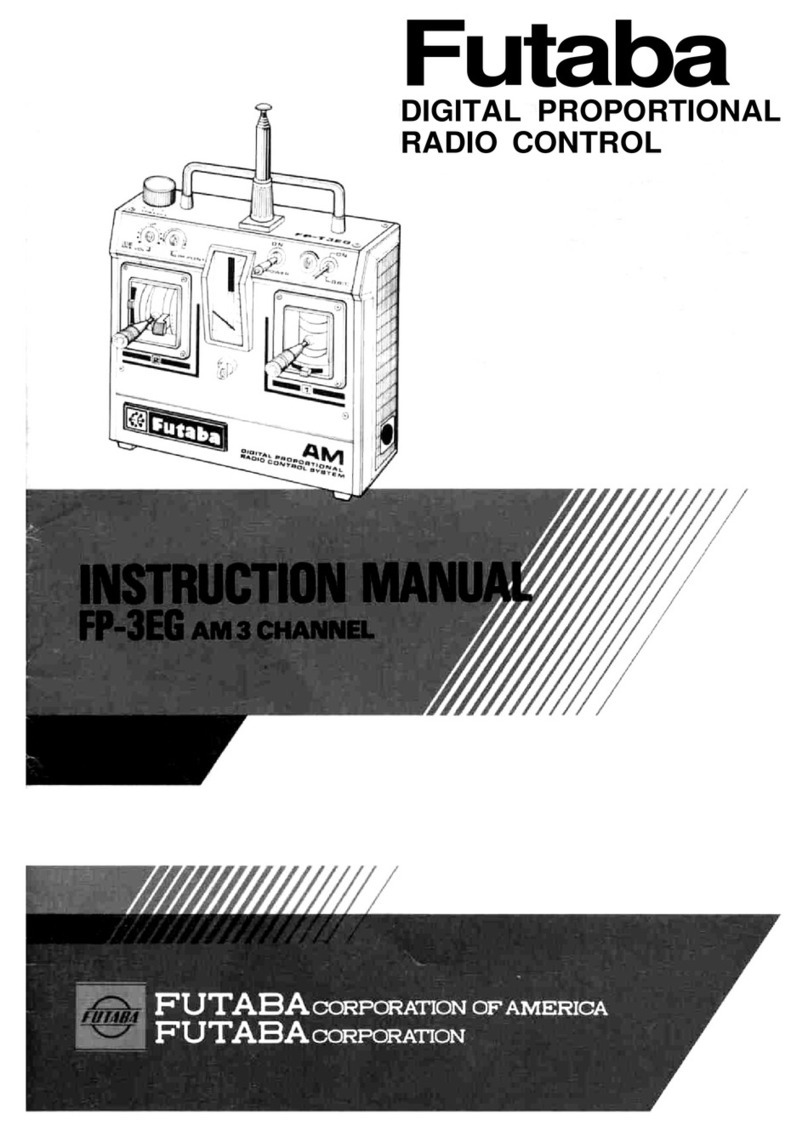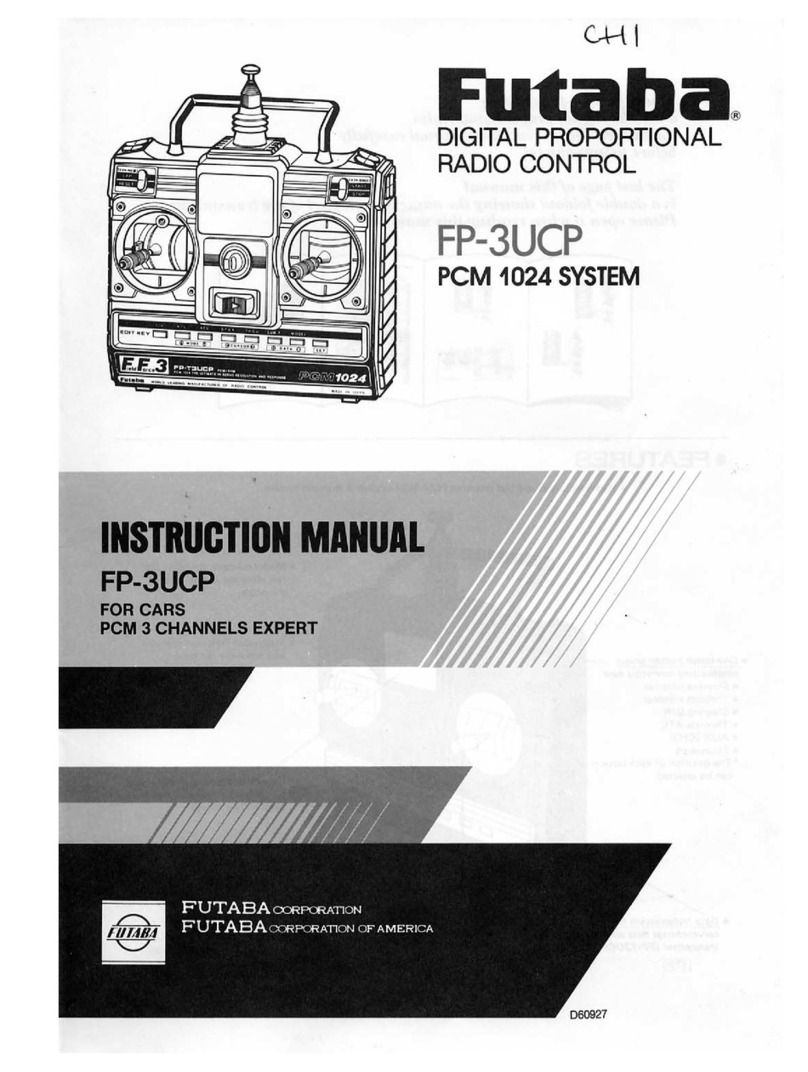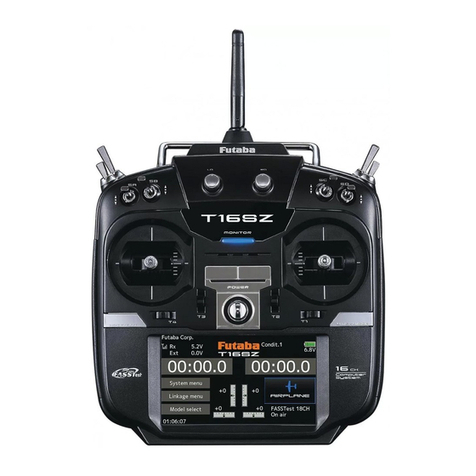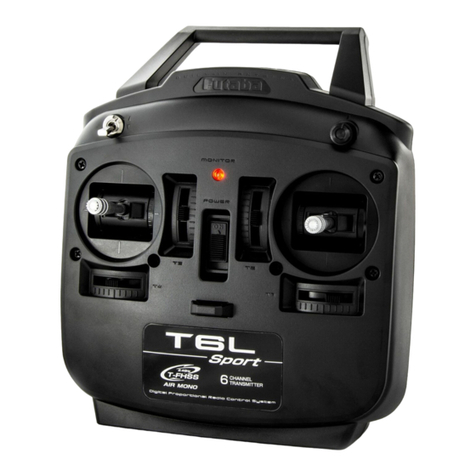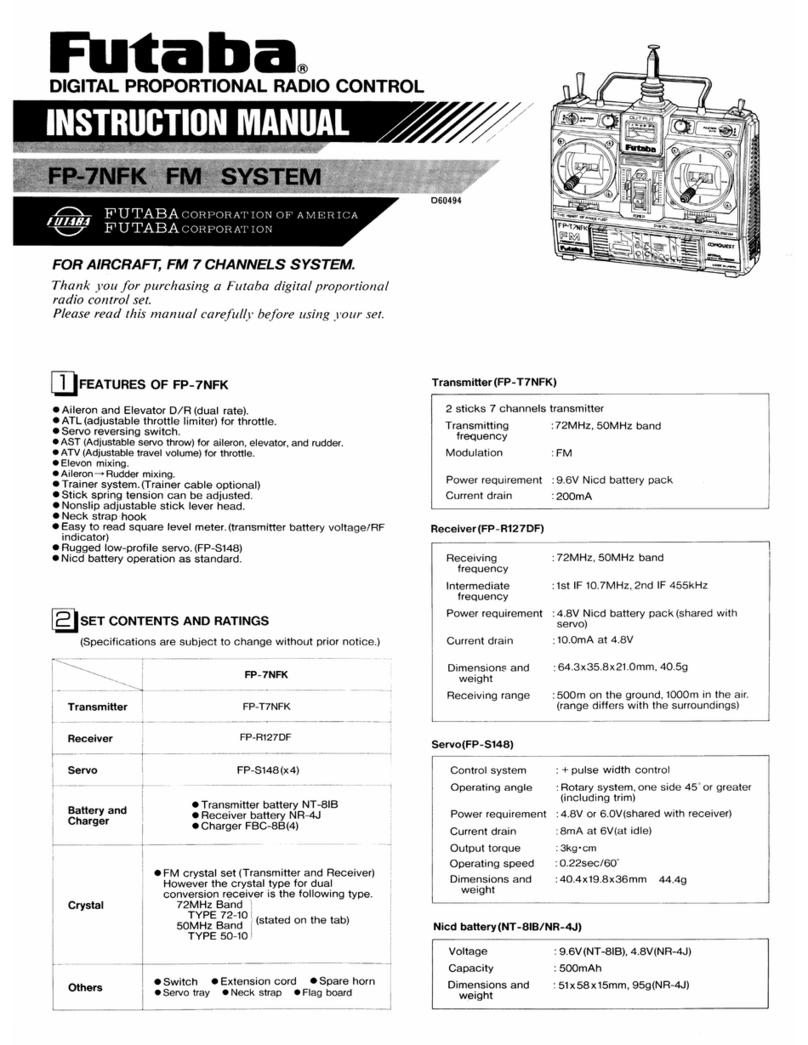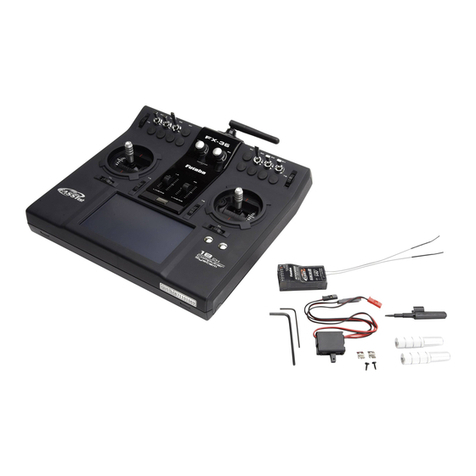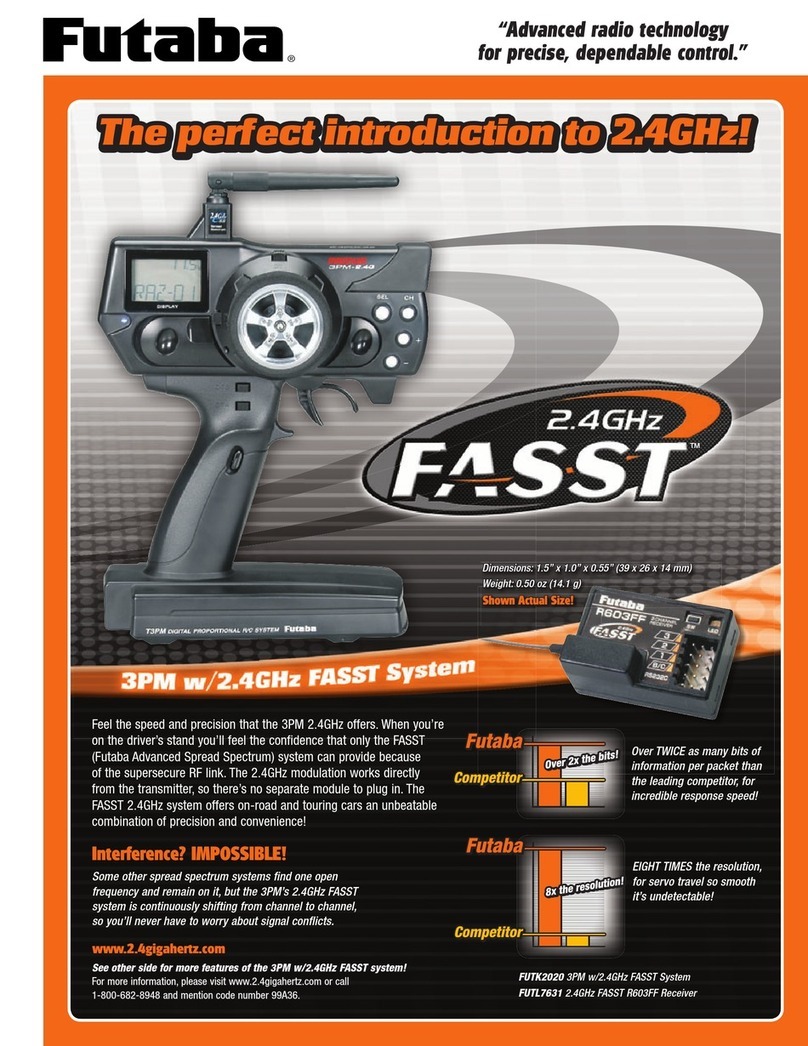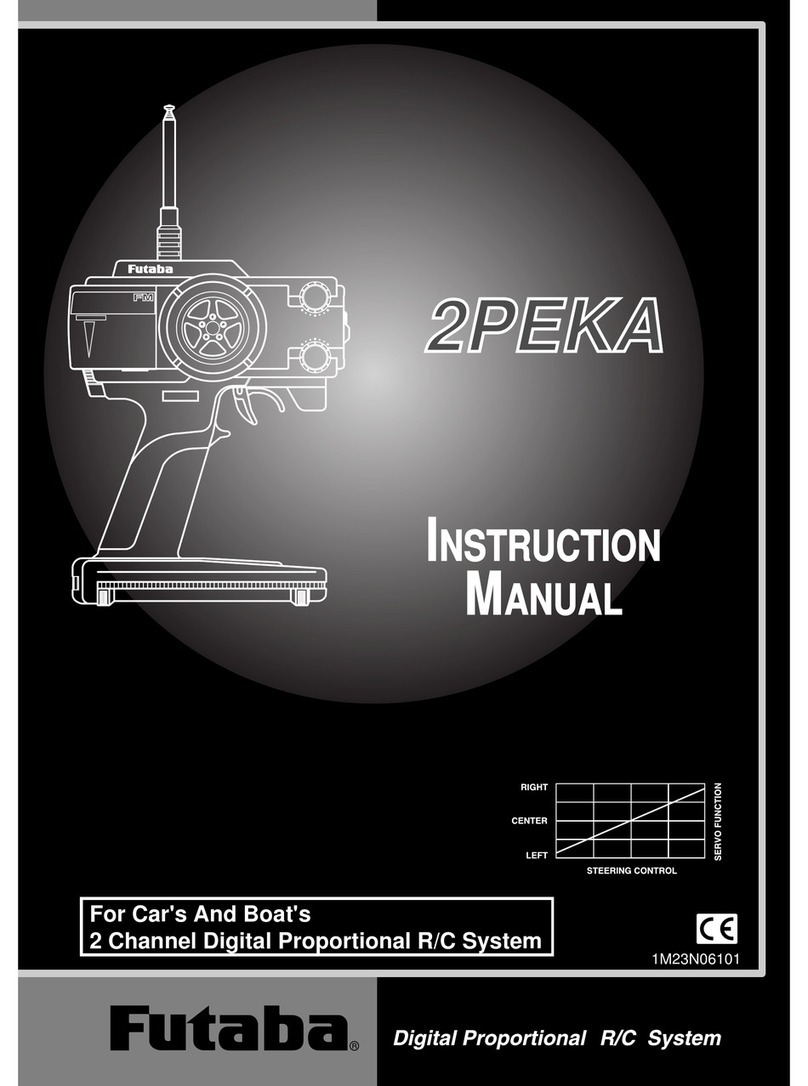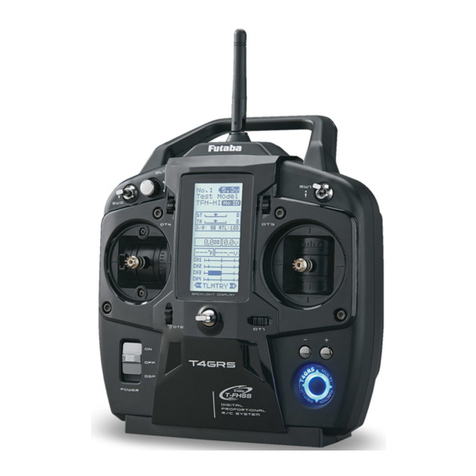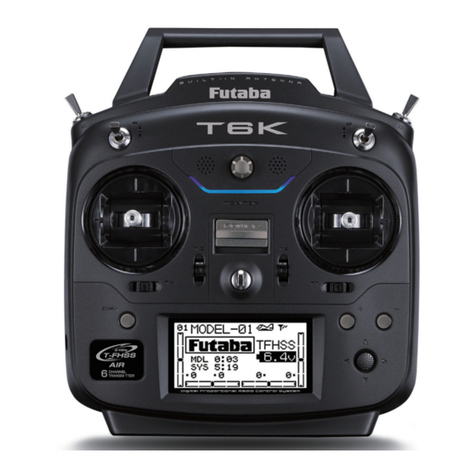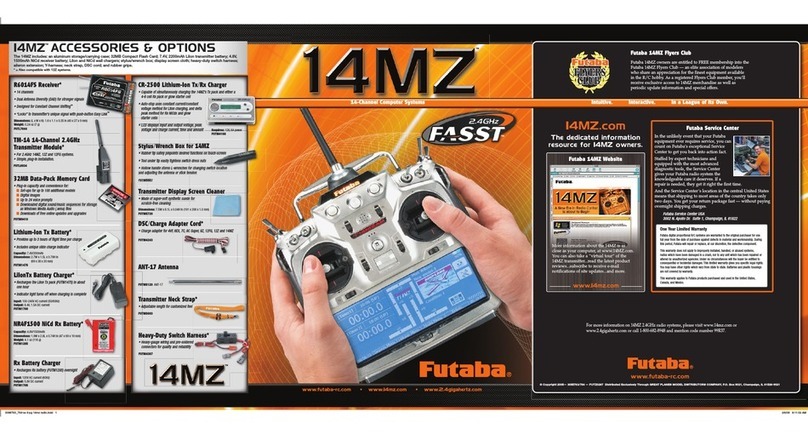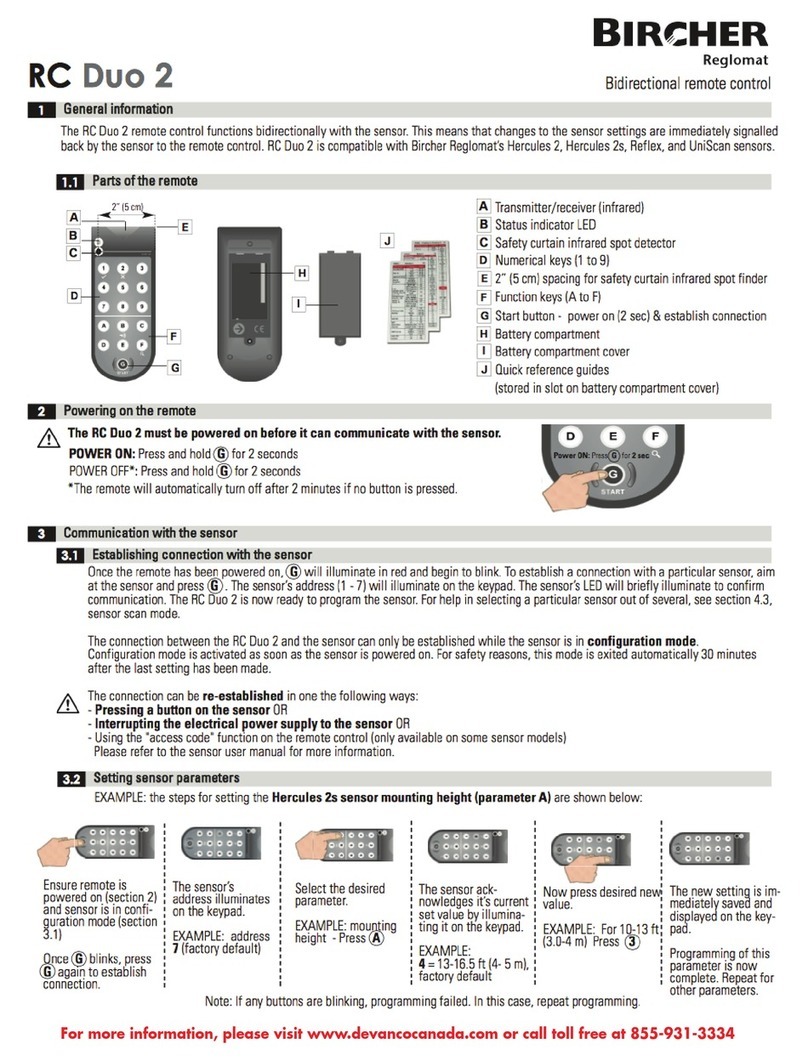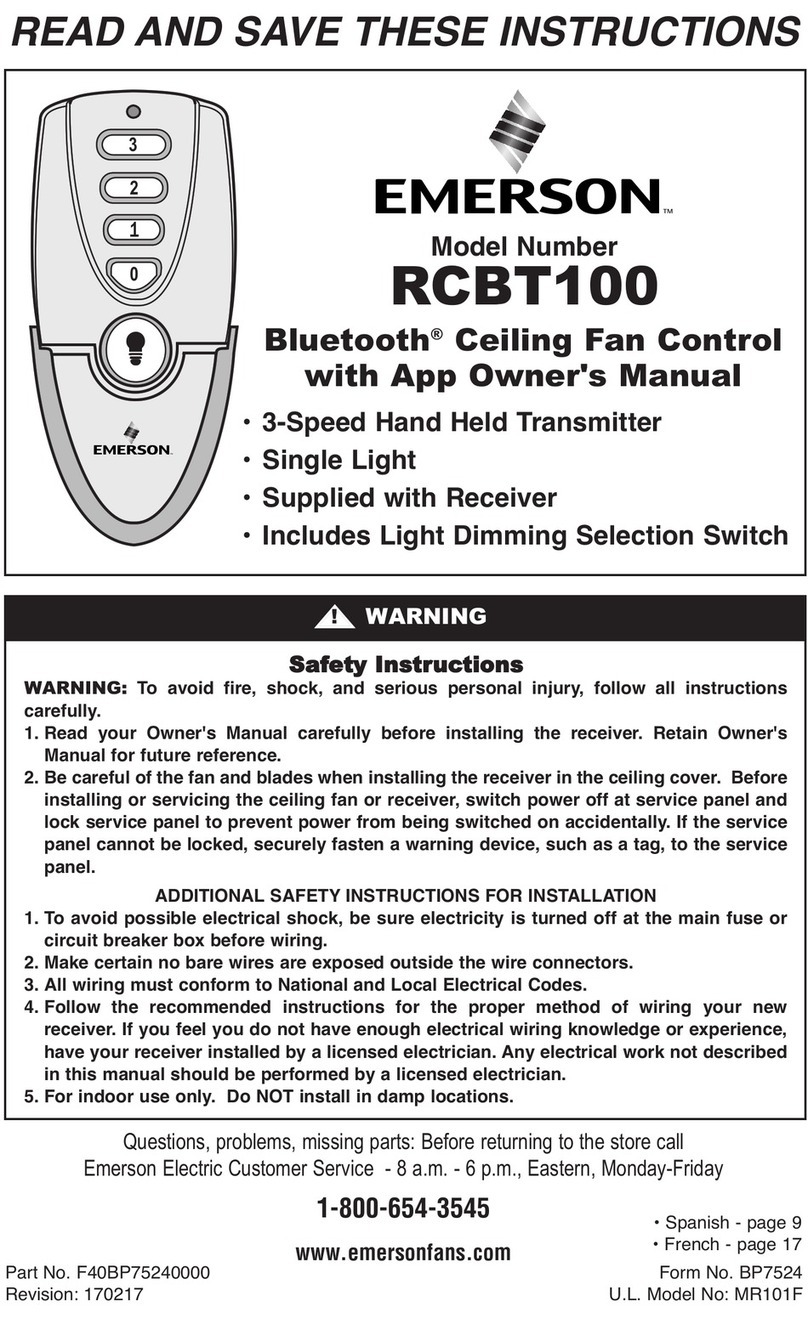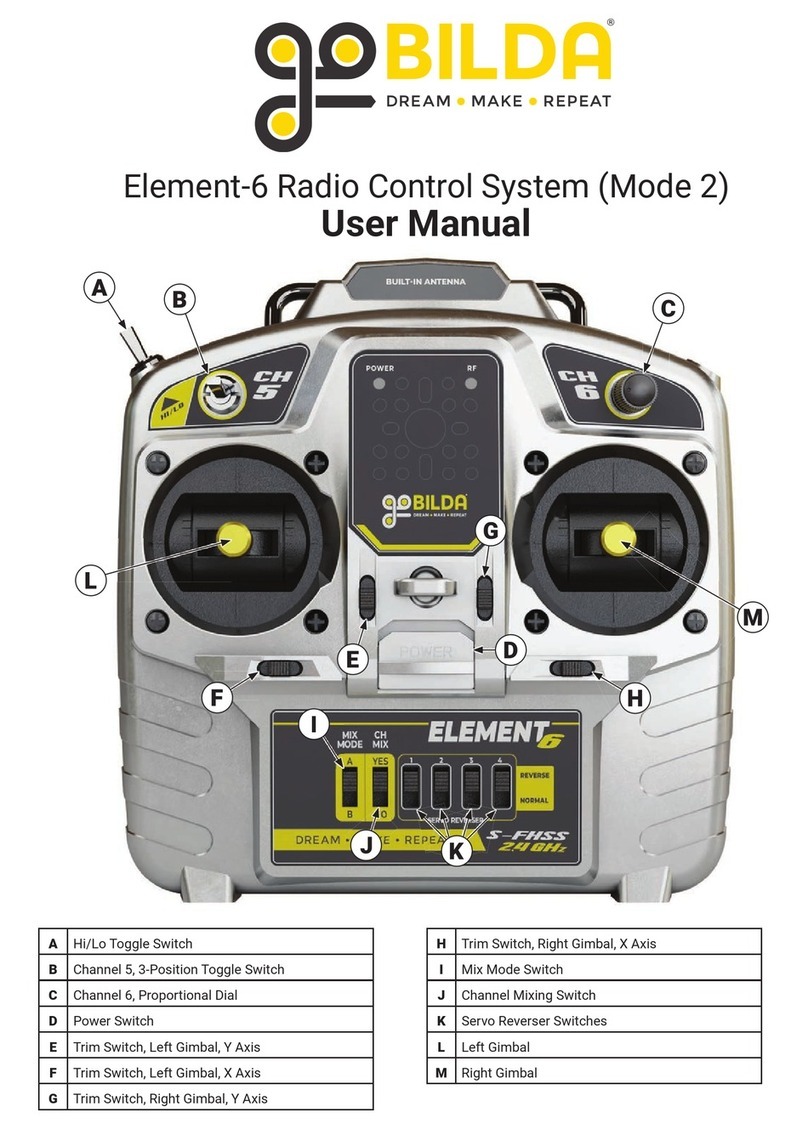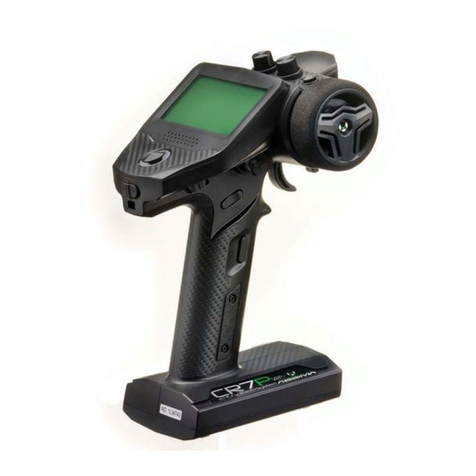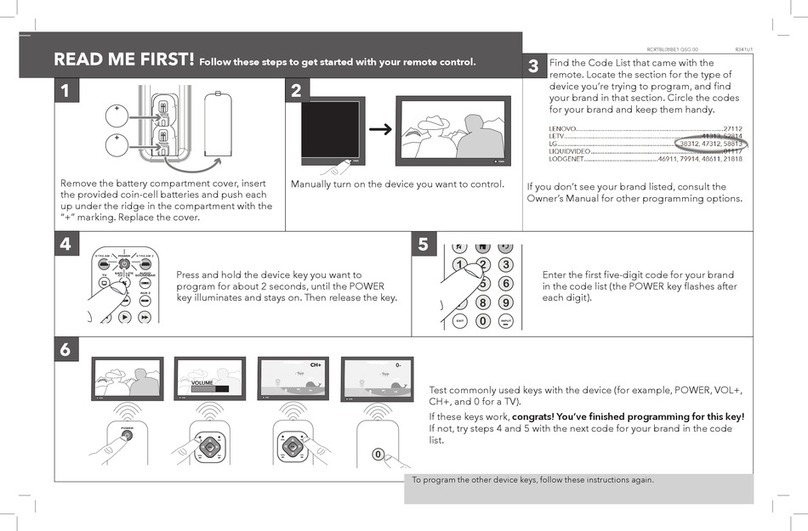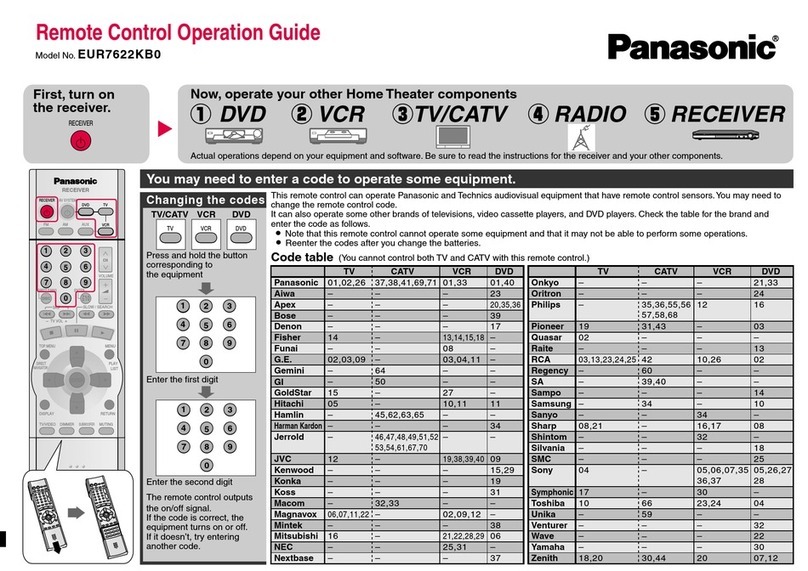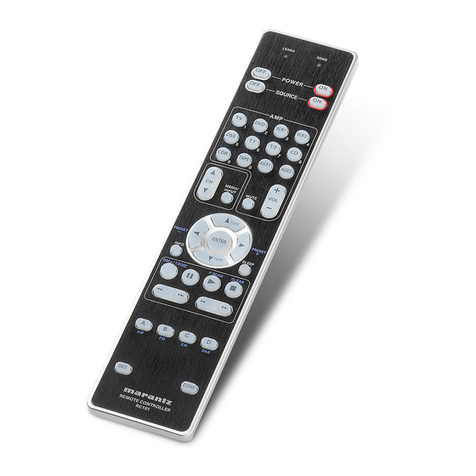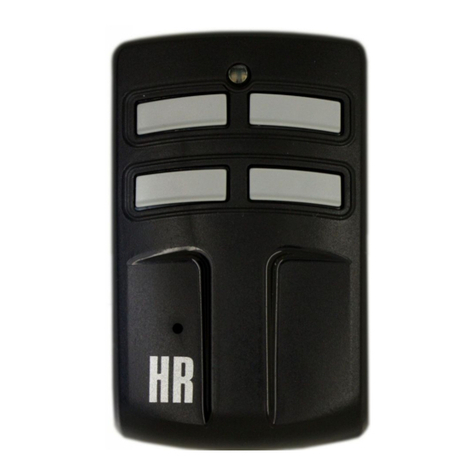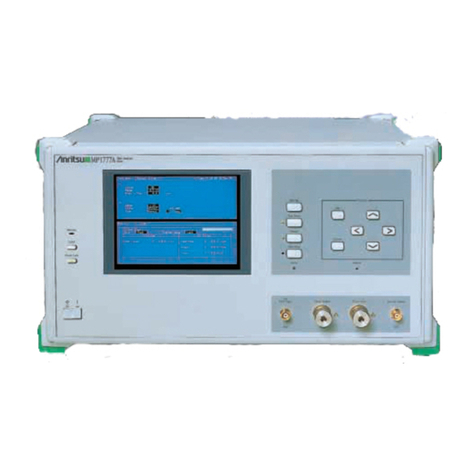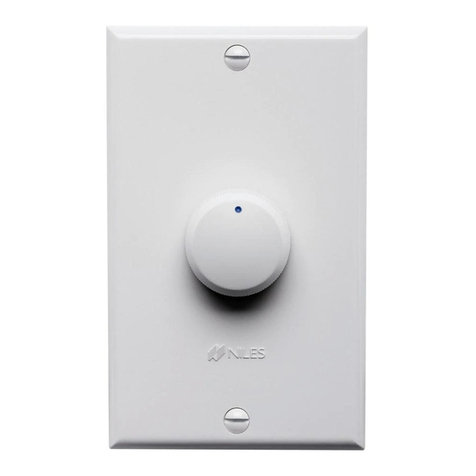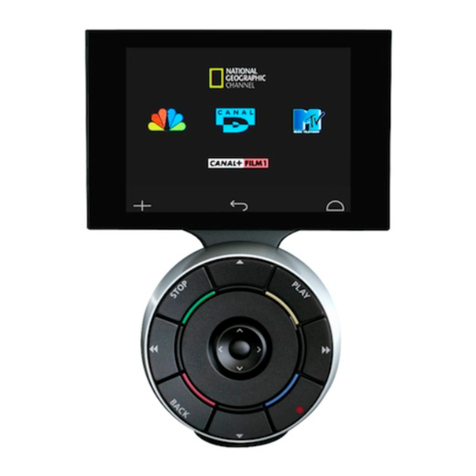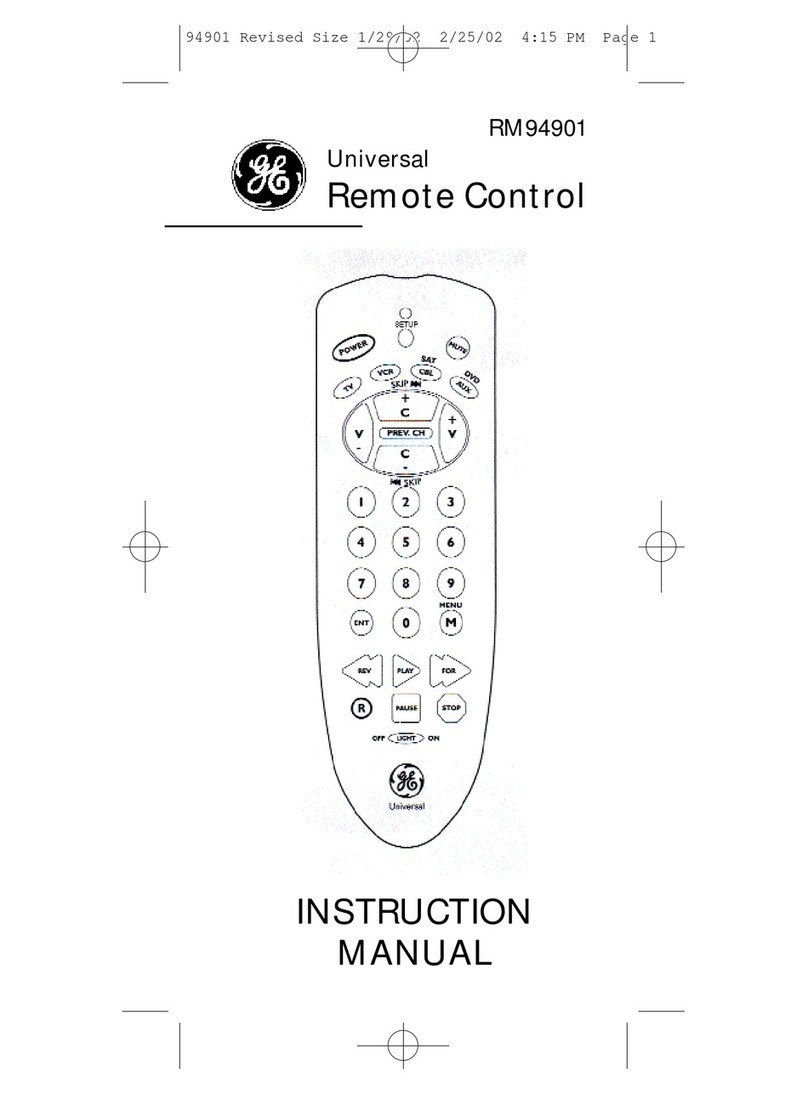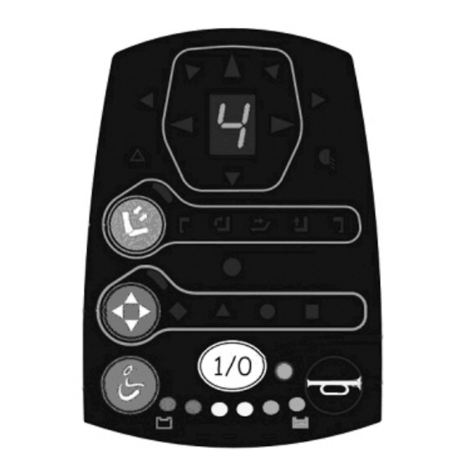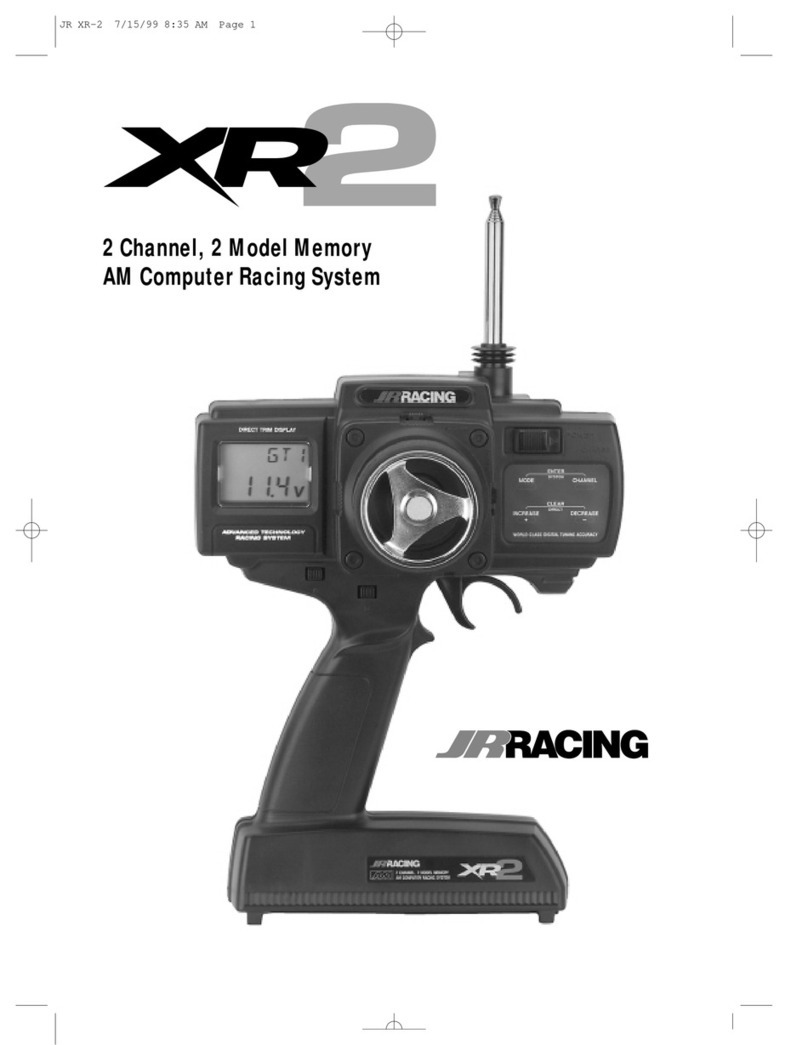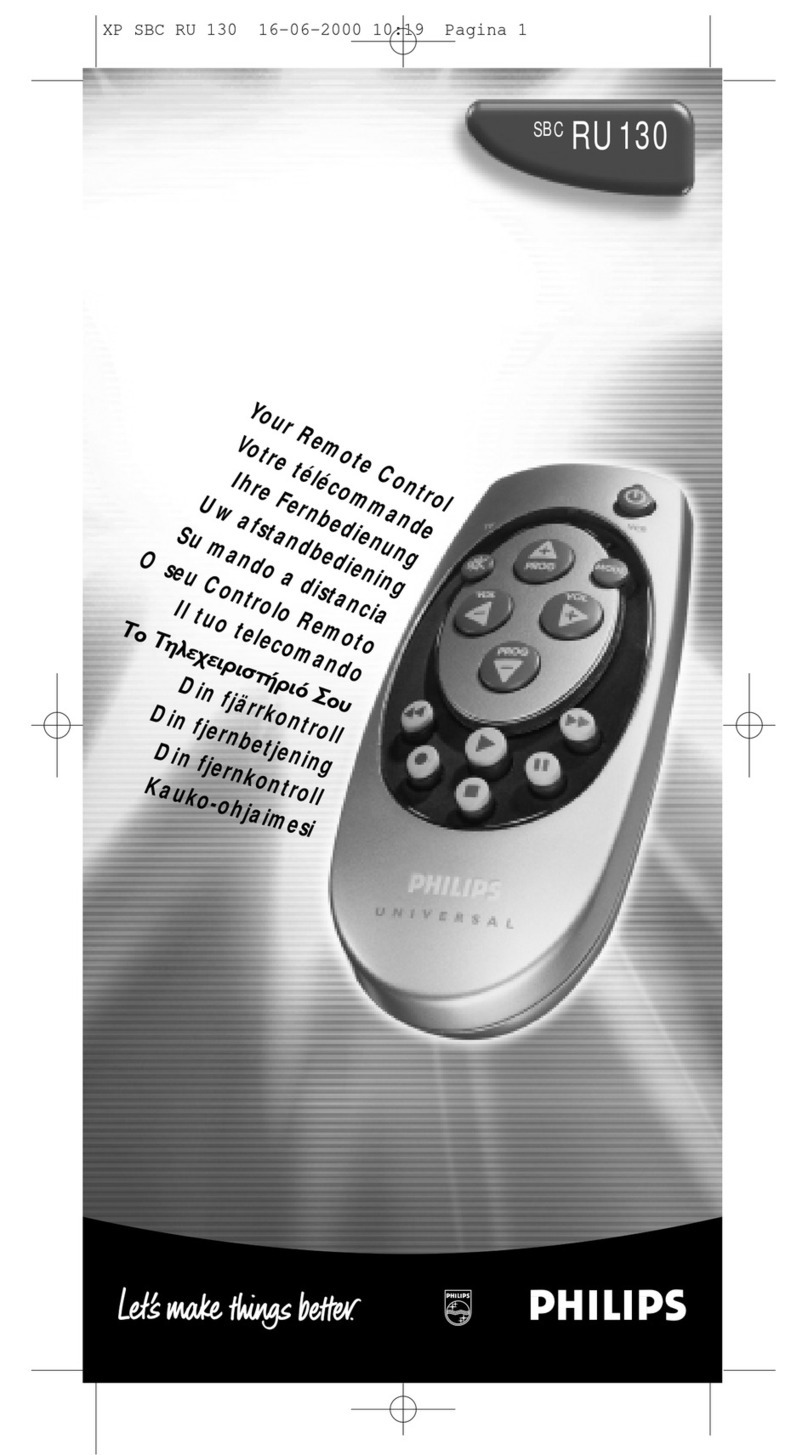
6→GO to TABLE OF CONTENTS
Thank you for purchasing a Futaba®FASSTest-2.4 GHz* T16IZ series digital proportional R/C system. This system is
extremely versatile and may be used by beginners and pros alike. In order for you to make the best use of your system
and to y safely, please read this manual carefully. If you have any diculties while using your system, please consult
the manual, our online Frequently Asked Questions (on the web pages referenced below), your hobby dealer, or the
Futaba Service Center.
*FASSTest: Futaba Advanced Spread Spectrum Technology extend system telemetry
Due to unforeseen changes in production procedures, the information contained in this manual is subject to change
without notice.
Support and Service: It is recommended to have your Futaba equipment serviced annually during your hobby’s “o
season” to ensure safe operation.
InNorthAmerica
Please feel free to contact the Futaba Service Center for assistance in operation, use and programming. Please be
sure to regularly visit the T16IZ Frequently Asked Questions web site at www.futabausa.com/. This page includes
extensive programming, use, set up and safety information on the T16IZ radio system and is updated regularly. Any
technical updates and US manual corrections will be available on this web page. If you do not nd the answers to your
questions there, please see the end of our F.A.Q. area for information on contacting us via email for the most rapid and
convenient response.
Don’t have Internet access? Internet access is available at no charge at most public libraries, schools, and other public
resources. We nd internet support to be a fabulous reference for many modelers as items can be printed and saved for
future reference, and can be accessed at any hour of the day, night, weekend or holiday. If you do not wish to access
the internet for information, however, don’t worry. Our support teams are available Monday through Friday 8-5 Central
time to assist you.
ForService:
FUTABA Corporation of America
2681 Wall Triana Hwy Huntsville, AL 35824, U.S.A.
Phone:1-256-461-9399 FAX:1-256-461-1059
https://www.futabausa.com/
OutsideNorthAmerica
Please contact your Futaba importer in your region of the world to assist you with any questions, problems or service
needs. Please recognize that all information in this manual, and all support availability, is based upon the systems
sold in North America only. Products purchased elsewhere may vary. Always contact your region’s support center for
assistance.
INTRODUCTION
Application,Export,andModication
1. This product may be used for unmanned aerial vehicle use. It is not intended for use in any application other than
unmanned aerial vehicle control. The product is subject to regulations of the Ministry of Radio/Telecommunications
and is restricted under Japanese law to such purposes.
2. Exportation precautions:
(a) When this product is exported from the country of manufacture, its use is to be approved by the laws governing
the country of destination which govern devices that emit radio frequencies. If this product is then re-exported to other
countries, it may be subject to restrictions on such export. Prior approval of the appropriate government authorities may
be required. If you have purchased this product from an exporter outside your country, and not the authorized Futaba
distributor in your country, please contact the seller immediately to determine if such export regulations have been met.
(b) Use of this product with anything other than models may be restricted by Export and Trade Control Regulations,
and an application for export approval must be submitted. This equipment must not be utilized to operate equipment
other than radio controlled models.
3. Modification, adjustment, and replacement of parts: Futaba is not responsible for unauthorized modification,
adjustment, and replacement of parts on this product. Any such changes may void the warranty.
Please visit www.futabausa.com to create and submit a service ticket for warranty, repair, or check up work
